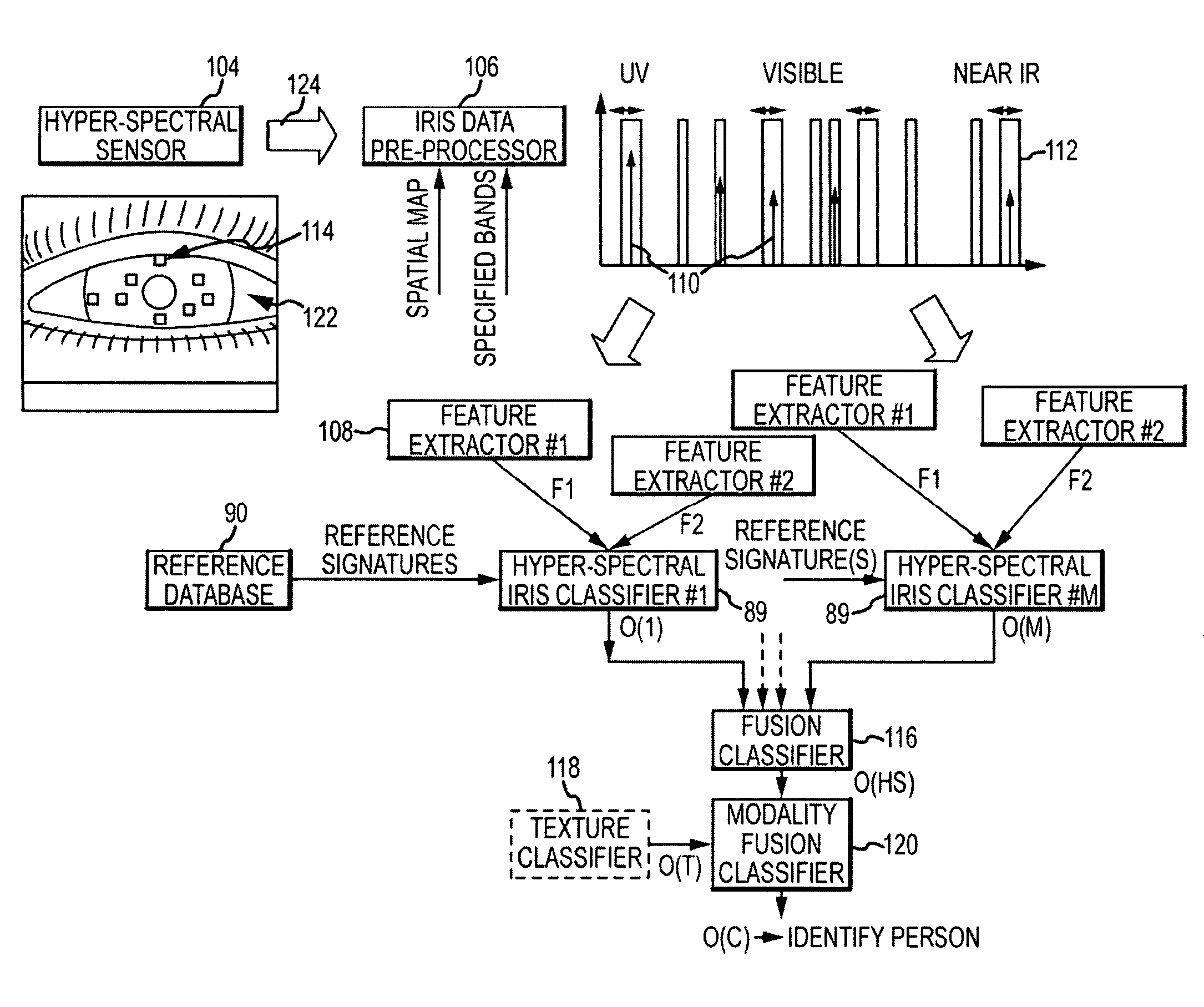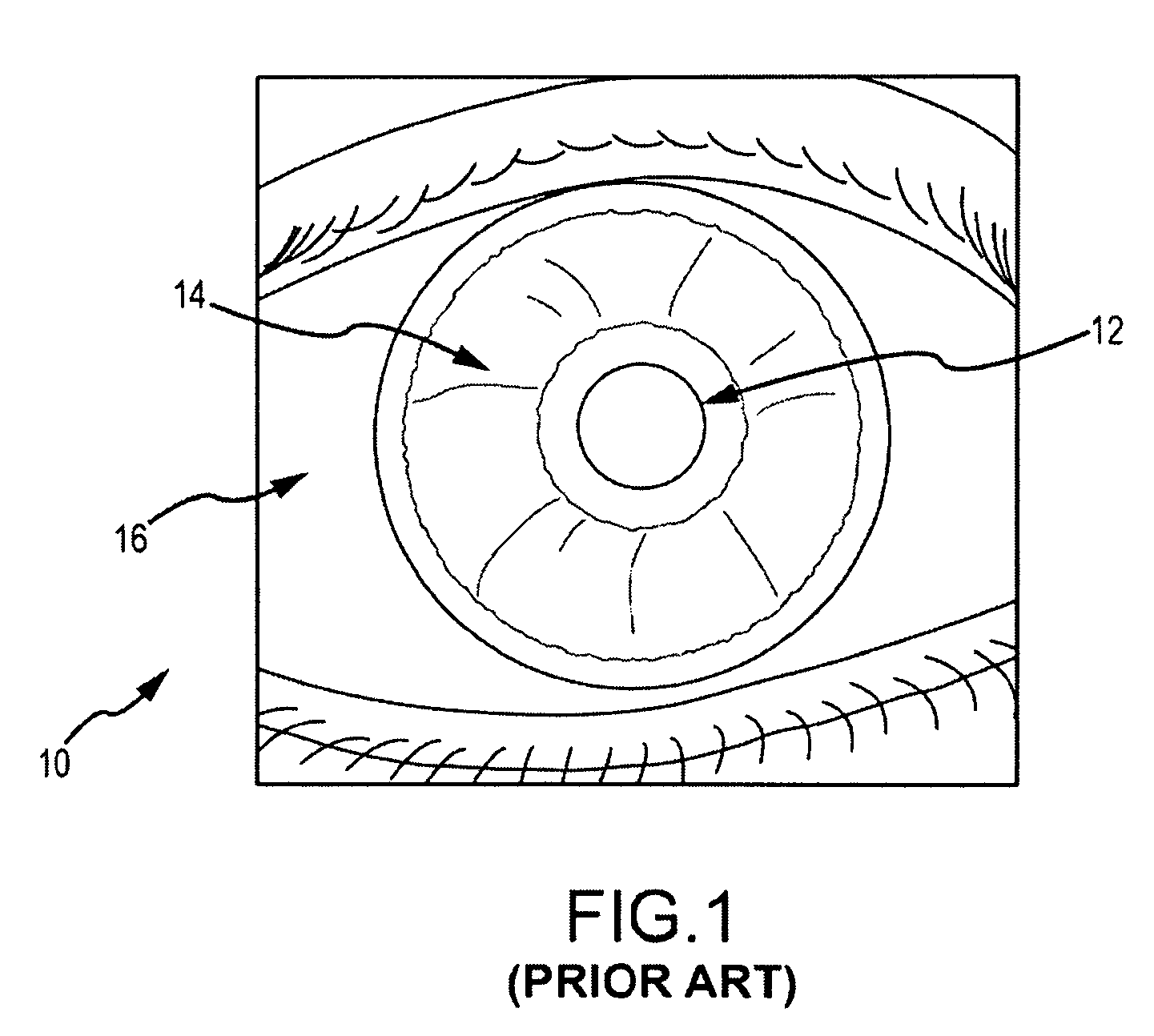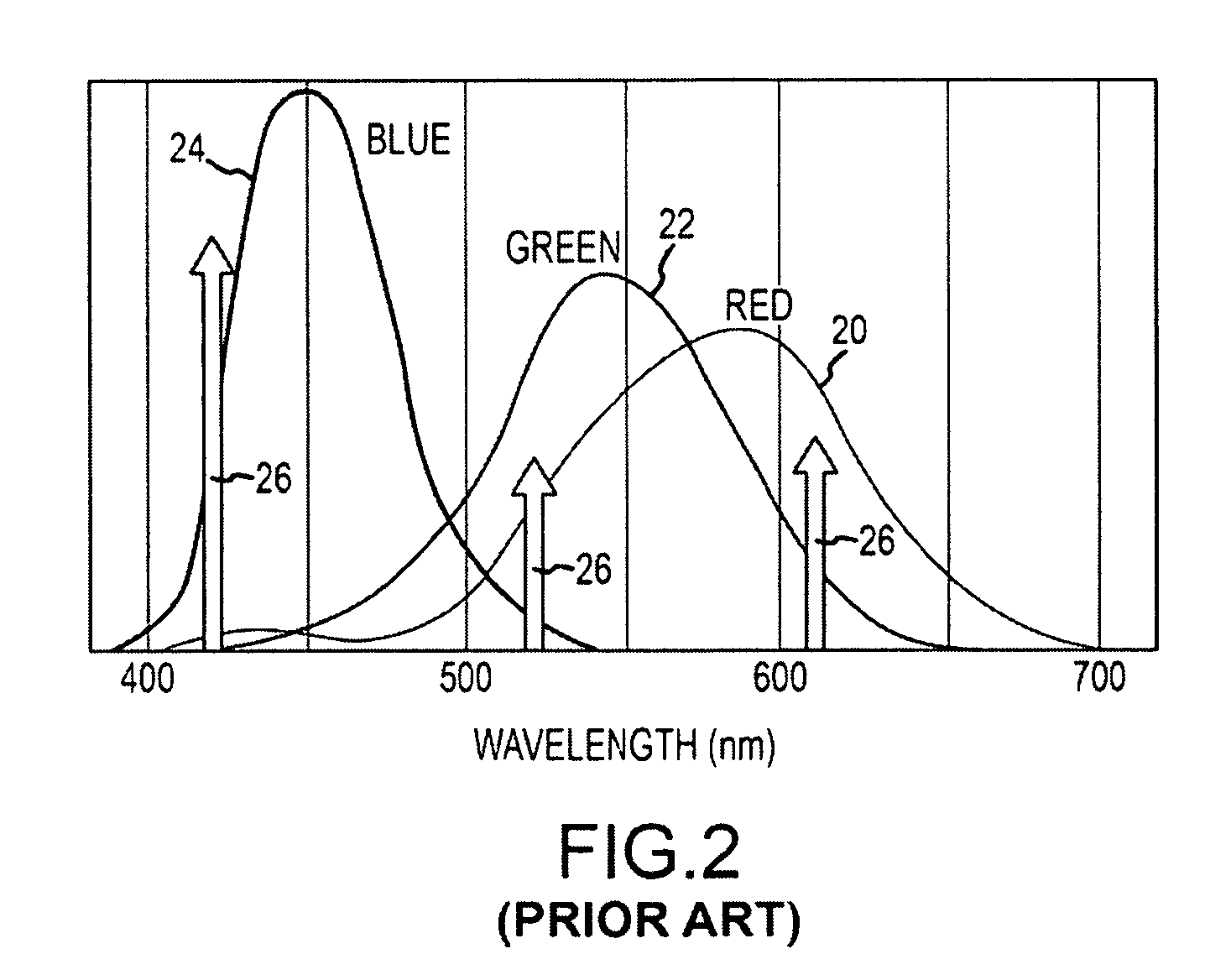Iris recognition using hyper-spectral signatures
a hyper-spectral signature and iris technology, applied in the field of biometric identification through iris recognition, can solve the problem of not being able to uniquely recognize a person's iris, and achieve the effect of less spatial resolution, less aperture size, and more robust performan
- Summary
- Abstract
- Description
- Claims
- Application Information
AI Technical Summary
Benefits of technology
Problems solved by technology
Method used
Image
Examples
Embodiment Construction
[0021]The present invention describes a unique biometric identifier based on the spectral diversity of the iris. By careful selection of a number of spectral bands, four or more, the hyper-spectral signature derived from data contained in those bands can distinguish color signatures that are not visually distinguishable in RGB color space to uniquely identify a person. Classification of hyper-spectral signatures requires less spatial resolution than the classification of texture signatures, maybe an order of magnitude or more. This reduces the size of the aperture at a given range.
[0022]FIG. 1 is a simplified drawing of a human eye 10 showing in detail the features of the pupil 12, iris 14 and sclera 16. Pupil 12 is a sphere located in the center of the iris that controls the amount of light that enters the eye. The pupil appears black because most of the light entering the pupil is absorbed by tissue inside the eye. Iris 14 consists of pigmented librovascular tissue known as a stro...
PUM
 Login to View More
Login to View More Abstract
Description
Claims
Application Information
 Login to View More
Login to View More - R&D
- Intellectual Property
- Life Sciences
- Materials
- Tech Scout
- Unparalleled Data Quality
- Higher Quality Content
- 60% Fewer Hallucinations
Browse by: Latest US Patents, China's latest patents, Technical Efficacy Thesaurus, Application Domain, Technology Topic, Popular Technical Reports.
© 2025 PatSnap. All rights reserved.Legal|Privacy policy|Modern Slavery Act Transparency Statement|Sitemap|About US| Contact US: help@patsnap.com



